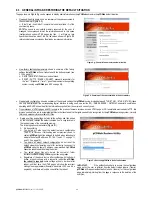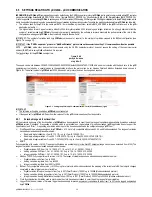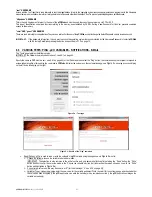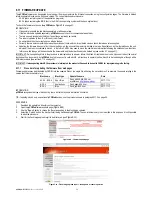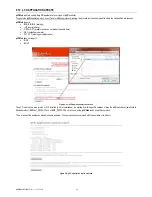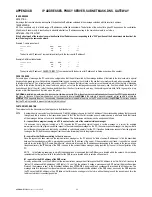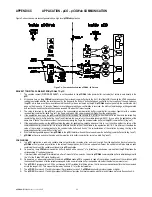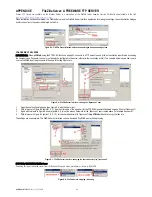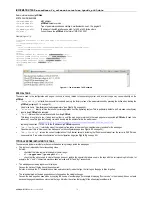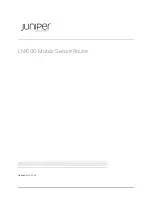
pCOWeb
+030220966 – rel. 1.1 – 12.12.2017
58
MAC ADDRESS - STATIC OR AUTOMATIC IP ADDRESS (DHCP).
APPENDIX A
Each
pCOWeb
has a MAC (Medium Access Control) address that is unique at a worldwide level from all other network devices. In addition, each
pCOWeb
connected in the data network must be set with a unique IP address. If the network that the
pCOWeb
is connected to uses the automatic “DHCP” system for
assigning the address, a manual setting of the addresses will not be needed. Vice-versa, each individual
pCOWeb
will need to be set one-by-one the IP
address.
MAC address
Each network device is distinguished from any other device connected on the network by the MAC address. The MAC address is a unique number at a
worldwide level. It is attributed to the device in the factory and subsequently cannot be modified. It is made up of 16 alphanumeric characters, in the following
range: 0, …, 9, A, …, F. For easier interpretation, this number is often represented in groups of two characters; an example of MAC address is:
00.0A.5C.10.00.81
The data network is a connection that carries messages from one network device simultaneously to all the other devices connected. Therefore, normally a
network device also receives messages sent to other devices. Each network device only considers a message if the destination MAC address matches its
own. All the other messages are ignored, except for the messages sent to a special MAC address called “broadcast”: FF.FF.FF.FF.FF.FF, which are
considered by all the devices, even if the destination address does not correspond to their own. The broadcast address is used to send “messages for all”. For
this reason, no network device can have the broadcast address as its own address.
IP address
In the data networks, the devices are also uniquely identified using another address, called the “IP address”.
IP stands for Internet Protocol.
Each device is therefore set with its own IP address.
Within a network, each IP address must be unique.
The correct setting of this address is fundamental for the exchange of data between the various devices.
The IP address is made up of four numbers separate by dots. Each of the four numbers is between 0 and 255. An example of an IP address is:
10.0.0.204
Static IP
The attribution of an IP address to a network device, for example
pCOWeb
, is subject to a number of rules; therefore, when
pCOWeb
is installed in a data
network, the network administrator must be contacted for a valid IP address. Only the network administrator who has the overall view of the entire
configuration of the installation can in fact choose a valid address for the
pCOWeb
. In systems that do not use the automatic DHCP system, each individual
pCOWeb
will need to be set with the IP address provided by the administrator (see 9.4.1 on page 45).
Dynamic IP (DHCP) (default method for
pCOWeb
)
In some networks, the IP address is automatically assigned to a network device by the central server via the data network itself (this is called the DHCP
server). The operation that uses an IP address provided by a central server is described as the “dynamic” IP address. This setting avoids, for systems that
use DHCP, having to set the correct address on the
pCOWeb
and (computers) one-by-one, allowing significant time savings. In this case, the network
administrator will have configured the DHCP server with a table of MAC addresses
↔
IP addresses, and will be able to distinguish the various devices by the
MAC address and a table that describes, for each MAC address, the physical position of the device in the installation (see 2.2 on page 10). In this case, the
devices that are connected must first have been configured to use this method for exchanging the IP address.
pCOWeb
has DHCP active by default.
In these networks, therefore, the IP address is decided by the network administrator who configures the DHCP server, and who must be contacted
to ask which address has been attributed.
If DHCP is active, up to three additional static IP address can be assigned – see 9.4.1 on page 45.

